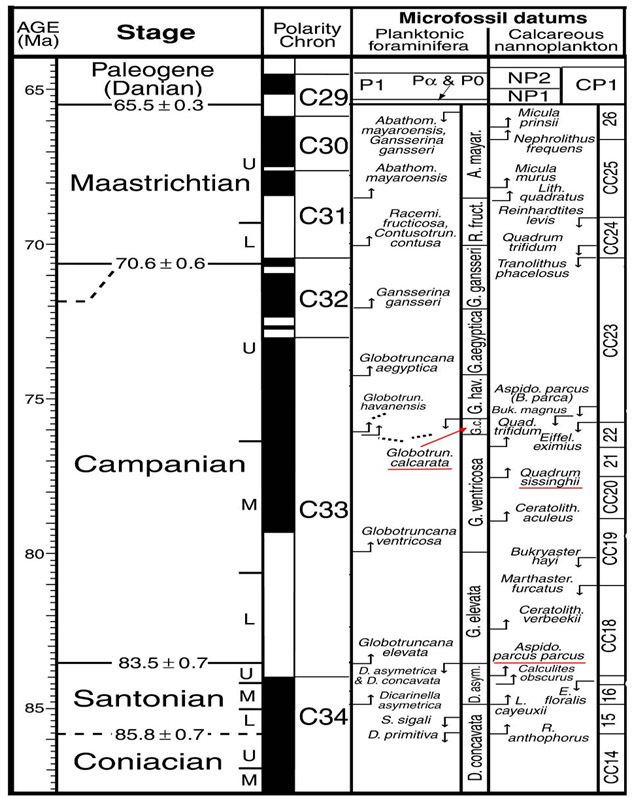 | ||
The Campanian is, in the ICS' geologic timescale, the fifth of six ages of the Late Cretaceous epoch (or, in chronostratigraphy: the fifth of six stages in the Upper Cretaceous series). The Campanian spans the time from 83.6 ± 0.7 Ma to 72.1 ± 0.6 Ma (million years ago). It is preceded by the Santonian and it is followed by the Maastrichtian.
Contents
Stratigraphic definition
The Campanian was introduced in scientific literature by Henri Coquand in 1857. It is named after the French village of Champagne in the département Charente-Maritime. The original type locality was an outcrop near the village of Aubeterre-sur-Dronne in the same region. Due to changes of the stratigraphic definitions, this section is now part of the Maastrichtian stage.
The base of the Campanian stage is laid at the extinction of crinoid species Marsupites testudinarius. A GSSP had not yet been ratified in 2009. One possible candidate is in a section near a dam at Waxahachie, Texas.
The top of the Campanian is defined as the place in the stratigraphic column were the ammonite Pachydiscus neubergicus first appears.
Subdivision
The Campanian is sometimes subdivided into Lower, Middle and Upper subages. In the Tethys domain, the Campanian encompasses six ammonite biozones. They are, from young to old:
Paleontology
During the Campanian age, a radiation among dinosaur species occurred. In North America, for example, the number of known dinosaur genera rises from 4 at the base of the Campanian to 48 in the upper part. This development is sometimes referred to as the "Campanian Explosion". However, it is not yet clear if the event is artificial, i.e. the low number of genera in the lower Campanian can be caused by a lower preservation chance for fossils in deposits of that age. The generally warm climates and large continental area covered in shallow sea during the Campanian probably favoured the dinosaurs. In the following Maastrichtian stage, the number of North American dinosaur genera found is 30% less than in the upper Campanian.
Animals that lived in the Campanian include:
†Theropods (non-avian)
David J. Varrichio observes that during the late Campanian Alberta and Montana had very similar theropods despite significant differences in the types of herbivorous dinosaur faunas.
